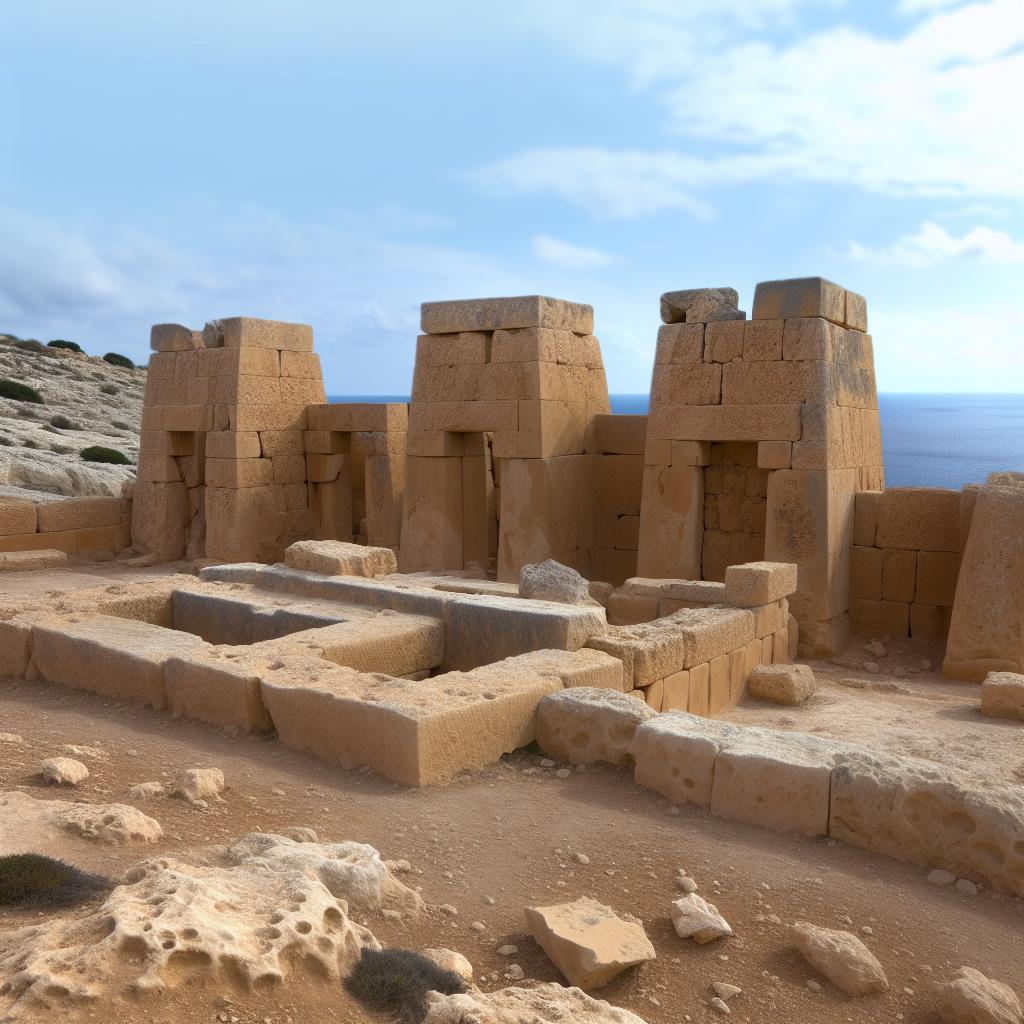Introduction to Mnajdra Temples
The Mnajdra Temples are an extraordinary representation of ancient architectural skills, situated along the breathtaking southern coast of Malta. These structures embody the remarkable capabilities of the prehistoric communities that once inhabited the island. Being among the most significant and well-preserved megalithic structures globally, the Mnajdra Temples were constructed during the Neolithic period. They offer a window into the rituals and daily life of Malta’s first inhabitants, providing invaluable insights for modern historians and archaeologists.
Historical Significance
Reaching back in time to approximately 3600-2500 BCE, the Mnajdra Temples were the product of several centuries of construction. They form part of a broader collection of megalithic monuments on the Maltese islands, earning them recognition as a UNESCO World Heritage Site. The site comprises three temples, with each reflecting different developmental stages of Neolithic architecture and showcasing the evolution of architectural techniques over time.
The Structure and Design
Situated around 500 meters from the Ħaġar Qim Temples, the Mnajdra complex features an upper, middle, and lower temple. Constructed using local limestone, these stones vary in durability, leading them to weather differently over the millennia. This use of local materials reflects the resourcefulness and adaptability of the ancient builders, emphasizing their close relationship with the natural environment.
Architectural Features
The Mnajdra Temples exhibit a high level of architectural sophistication. Designed in a trefoil shape, the temples make extensive use of corbelling, stone carving, and precision-fitted joints. The lower temple, in particular, contains intricate carvings and decorations that suggest a rich symbolic or spiritual purpose. These features highlight the community’s advanced understanding of construction techniques and their desire to create spaces that were not merely functional but also held aesthetic and cultural significance.
Astronomical Alignments
One of the most captivating aspects of the Mnajdra Temples is their alignment with celestial events. The lower temple is specifically oriented to allow sunlight to illuminate certain areas during solstices and equinoxes. This alignment indicates a sophisticated understanding of astronomy by the prehistoric builders. It’s presumed that these alignments played integrated roles in the religious and ceremonial practices of the societies that crafted these extraordinary temples, emphasizing a deep connection between their daily lives, spiritual beliefs, and the cosmos.
Preservation Efforts
Preserving the Mnajdra Temples has become a crucial mission for cultural heritage institutions committed to maintaining these ancient structures. Due to their considerable age and continuous exposure to natural elements, significant protective measures have been employed. In 2009, a protective tent was erected above the site, shielding it from weather-induced deterioration and the impacts of rising sea levels, which are increasingly threatening coastal heritage sites worldwide.
Visiting Mnajdra Temples
The Mnajdra Temples welcome visitors and are accessible through the Heritage Malta network. Tourists have the opportunity to explore these ancient ruins and appreciate the brilliance behind their construction. It is advisable to visit early in the morning or late afternoon to fully savor the stunning views offered by the encircling Mediterranean landscape.
Guided tours are available for those interested in gaining a deeper understanding of the site’s historical and architectural significance within the larger context of Maltese megalithic culture. These educational tours not only increase appreciation for the site’s archaeological value but also enhance understanding of the societal and spiritual dimensions that characterized the lives of Malta’s early inhabitants.
Conclusion
The Mnajdra Temples remain pivotal in demonstrating the artistic and architectural prowess of an ancient civilization. With their complex design, meticulous astronomical alignments, and rich historical importance, these temples continue to captivate historians, archaeologists, and visitors alike. They offer an intriguing glimpse into Malta’s illustrious past, serving as cultural treasures that link contemporary society with a profoundly ancient heritage.
As interest in these timeless monuments persists, both academic research and tourism continue to reveal more about their construction and use. The combination of scientific study and preservation efforts ensures that future generations will have the opportunity to experience and learn from this extraordinary facet of human history, fostering a deeper appreciation for the connection between our modern world and the distant past.

